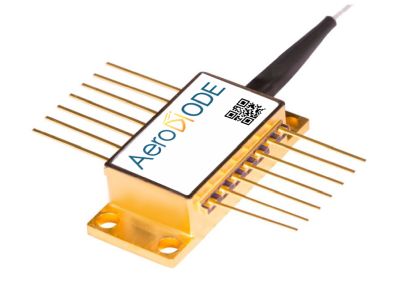superluminescence (original) (raw)
Definition: fluorescence which is enhanced by laser amplification
Category:  physical foundations
physical foundations
- luminescence
- fluorescence
* parametric fluorescence
* superfluorescence
* superluminescence
- fluorescence
Related: superluminescent sourcessuperluminescent diodesamplified spontaneous emissionstimulated emissionluminescencesuperfluorescence
Page views in 12 months: 348
DOI: 10.61835/y76 Cite the article: BibTex BibLaTex plain textHTML Link to this page! LinkedIn
Content quality and neutrality are maintained according to our editorial policy.
📦 For purchasing superluminescent diodes, use the RP Photonics Buyer's Guide — an expert-curated directory for finding all relevant suppliers, which also offers advanced purchasing assistance.
What is Superluminescence?
Superluminescence is the same as amplified spontaneous emission: the emission of luminescence which experiences significant optical gain within the emitting device, and therefore can be relatively intense. Due to the wavelength-dependent gain (with a finite gain bandwidth), the optical spectrum of the emitted light is different in shape from the spectrum of the luminescence, and the bandwidth is usually smaller.
Superluminescence is often used for generating light with a broad bandwidth, e.g. in superluminescent diodes. Such light sources are called superluminescent sources or {ASE=amplified spontaneous emission} sources. Typical examples are semiconductor optical amplifiers (then called superluminescent diodes) and fiber amplifiers, both operated without a signal input.
Suppliers
Sponsored content: The RP Photonics Buyer's Guide contains 28 suppliers for superluminescent diodes. Among them:
⚙ hardware
Serving North America, RPMC offers a selection of broadband Superluminescent Diodes (SLEDs). With broad-spectrum options (≈770-1700 nm), bandwidths up to 460 nm, and output power up to 130 mW (free-space) and up to 50 mW (fiber-coupled), these devices provide high brightness, low coherence & low noise, and speckle-free performance. (types/superluminescent-diodes/).
These diverse, configurable, and fully customizable SLED broadband sources are available in OEM or turnkey versions, with a single SLED or multiple SLEDs in the same device providing ultimate broadband and high-power output. Turnkey versions are provided with advanced features and options like an intuitive GUI, dual-stage isolator, TEC, monitor diode & more.
Our broad-spectrum Superluminescent Diodes are perfect for medical/industrial OCT, optical component testing, telecom test equipment, industrial/biomedical imaging systems, optical sensing, test & measurement, and R&D.
Let RPMC help you find the right laser today!
⚙ hardware
SHIPS TODAY: SLED diodes at 1310 or 1550 nm are offered as stock items or associated with a CW laser diode driver or pulsed laser diode driver. They are compatible with our high speed nanosecond pulsed drivers . The single-mode laser SLD diodes can reach high powers in the nanosecond pulse regime. Most turn-key diode & driver solutions are optimized for single-shot to CW performances with pulse width lengths down to 1 ns. The laser diode precision pulses are generated internally by an on-board pulse generator, or on demand from an external TTL signal.
⚙ hardware
Innolume’s superluminescent diodes (SLDs) deliver high optical power of >250 mW. They offer excellent coupling efficiency into single-mode fibers thanks to their high spatial coherence.
Designed for versatility and seamless system integration, these SLDs are available in a wide range of packaging configurations, including 14-pin butterfly modules with PM or HI fiber, loose tube, and integrated photodiode, as well as chip-level options such as submount, C-mount, and TO-can.
We support customization of peak wavelength (830–1330 nm) and spectral width (up to 110 nm), enabling tailored performance for specialized applications across medical imaging, optical sensing, and interferometry.
Questions and Comments from Users
Here you can submit questions and comments. As far as they get accepted by the author, they will appear above this paragraph together with the author’s answer. The author will decide on acceptance based on certain criteria. Essentially, the issue must be of sufficiently broad interest.
Please do not enter personal data here. (See also our privacy declaration.) If you wish to receive personal feedback or consultancy from the author, please contact him, e.g. via e-mail.
By submitting the information, you give your consent to the potential publication of your inputs on our website according to our rules. (If you later retract your consent, we will delete those inputs.) As your inputs are first reviewed by the author, they may be published with some delay.




